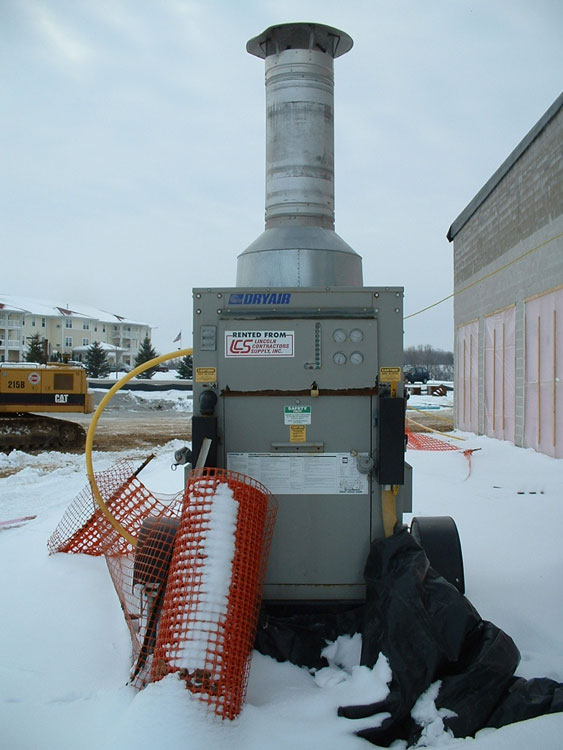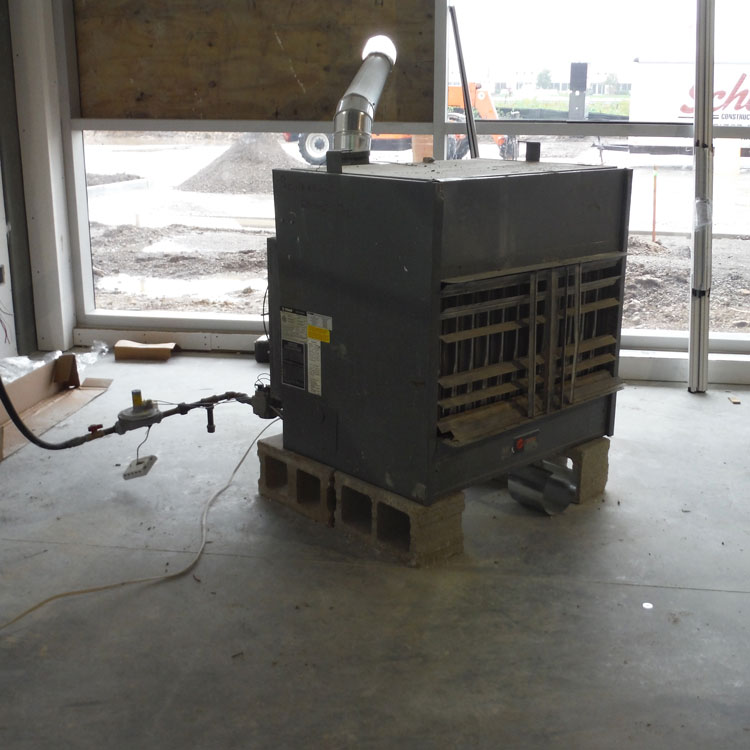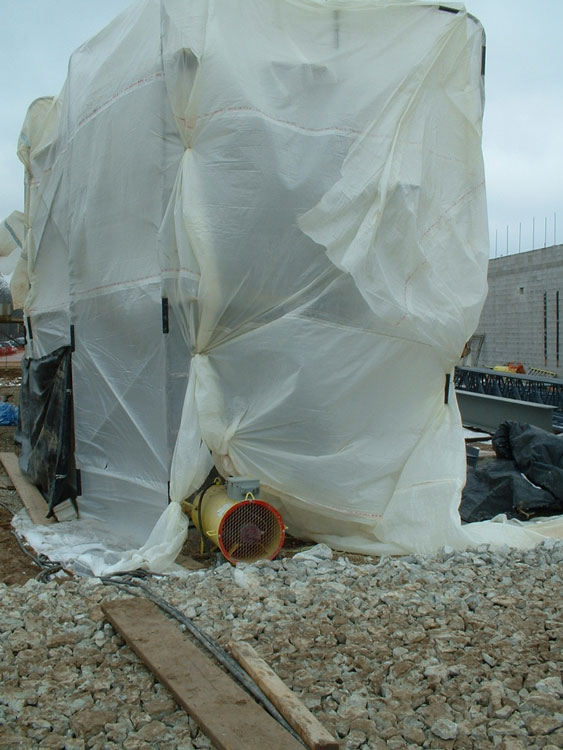
By Gregory Havel
Carbon monoxide (CO) is a colorless, odorless gas that is the product of incomplete combustion of carbon-based fuels.
The chemical reaction for the normal combustion of carbon that takes place with enough oxygen is: C + 02 => CO2(carbon atom plus oxygen molecule (two atoms) yields carbon dioxide molecule.) This chemical reaction is expected to take place in boilers and furnaces, and in fuel-controlled fires.
When there is too much fuel that is pyrolyzing or not enough oxygen to support complete combustion, the chemical reaction is: 2C + 02 => 2CO (Two carbon atoms plus oxygen molecule (two atoms) yields two carbon monoxide molecules.) This chemical reaction takes place in boilers and furnaces with too little oxygen, and in room-and-contents and structure fires that are ventilation controlled.
When carbon monoxide has been produced from incomplete combustion, it can finish burning in the chemical reaction: 2CO + O2 => 2CO2 (Two carbon monoxide molecules plus oxygen molecule (two atoms) yields two carbon dioxide molecules.) This chemical reaction can take place in the boiler or furnace flue pipe or chimney or outside the structure. If the chemical reaction does not take place, the unburned CO becomes an atmosphere contaminant that affects air quality. This chemical reaction can take place in the room contents fire’s discharge flow-path, causing “roll-over” or “flame-over,” the results of combustible products of combustion mixing with the oxygen in the fresh air and igniting. If the mixing with fresh air is thorough and rapid enough, the ignition of the gases can be explosive, resulting in a backdraft or smoke explosion.
These chemical reactions are the same whether they take place in a furnace or boiler, a fireplace, a room contents fire, or a conflagration.
Carbon monoxide produced by heating appliances is of little consequence to a homeowner, the owner of a commercial building, or a contractor at a building under construction, unless the CO enters the occupied space either from heating appliance defects or from inadequate venting of the combustion chamber. When CO enters occupied building spaces, it tends to increase in concentration in human blood to the point that occupants become ill.
RELATED: Near Miss: Post-Fire Metering for Carbon Monoxide | Six Firefighters Treated for Carbon Monoxide Poisoning in Ontario | Gas and Carbon Monoxide Awareness
The U.S. Occupational Safety and Health Administration (OSHA) has established a permissible exposure limit (PEL) of 50 parts per million time-weighted average (TWA) of carbon monoxide in the air in the workplace as being safe for an eight-hour workday.
The National Institute for Occupational Safety and Health (NIOSH) of the Centers for Disease Control (CDC) recognizes that some people are more sensitive to carbon monoxide than others, and has established a recommended exposure limit (REL) of 35 parts per million CO time-weighted average for an eight-hour workday.
Common sources of carbon monoxide on construction job sites are temporary heating appliances inside buildings and other enclosures that are operating without enough air for complete combustion (sometimes done deliberately to reduce fuel costs); and from internal combustion engines running inside buildings without adequate ventilation.

(1)
One type of temporary heating appliance for construction job sites has a trailer located outside the building (Photo 1, above) that contains a fuel source, a combustion chamber, a heat exchanger, and a pump. The fuel is burned in the combustion chamber outside the building. Antifreeze solution is circulated through the heat exchanger, hoses, and terminal units (hot-water coils with fans) inside the building. This type of heater provides little chance of CO contamination inside the building, since the combustion chamber and its vent are located outside.

(2)
Another type of temporary heater has its combustion chamber and a heat exchanger located on a trailer outside the building (Photo 2). Both heated air and cooler return air are circulated from the trailer into the building by fans through flexible ducts. If this type of heater is properly maintained, it is unlikely that there will be any significant levels of CO inside the heated spaces.

(3)
A third type of temporary heater locates the combustion chamber and heat exchanger inside the building, and vents the combustion chamber to the building’s exterior (Photo 3). A fan circulates the interior air through the heat exchanger to warm the building. If this type of heater is properly maintained, it is unlikely that there will be any significant levels of CO inside the heated spaces.

(4)
A fourth type of temporary heater is the “torpedo heater,” usually fueled with natural gas or liquefied propane (LP) gas. Photo 4 shows one of these heaters used to heat a scaffold enclosure so that masonry work may be completed in cold weather. In this arrangement, the heater draws its combustion air from outside the enclosure. The products of combustion (heat, carbon dioxide, and water vapor from the combustion of the hydrogen in the gas fuels) are discharged together into the bottom of the enclosure, rise upward through the enclosure, and are vented out the top through openings left in the enclosure. With a proper balance between heated combustion gases entering the enclosure at the bottom and venting from the top, it is possible to maintain good air quality inside the enclosure, with no more than a few parts per million CO present. The same effect can be obtained by locating the heater entirely inside the building or enclosure, and equipping the heater with a duct between outdoor air and the air intake on the heating appliance.

(5)
This same type of torpedo heater can be used inside a larger building or enclosure, without a combustion air supply. Photo 5 shows one of these heaters drawing combustion air from inside the building and discharging its products of combustion into the same space. This recirculation of combustion byproducts to be used as an oxygen source for combustion gradually reduces the levels of oxygen inside the building to the point that the atmosphere is oxygen deficient, and CO forms. The inside of the building will also become very humid because of the moisture build-up and condensation from contact with cool surfaces. However, the CO levels are easy to keep low, by adjusting the amount of fresh air and exhaust ventilation openings in the building or enclosure.
One midwestern state under OSHA jurisdiction has a “local emphasis program” for carbon monoxide in construction, which requires that the contractors monitor CO levels inside buildings and enclosures with temporary heat, or that have internal combustion engines running inside; and requires that the CO levels be maintained below the NIOSH REL of 35 ppm for an eight-hour work day. In the future, this program may become the rule for the six-state OSHA Region, and perhaps nationwide.
Emergency responders must be aware that a dispatch to a construction job site for a worker feeling ill may be related to CO concentrations. They should be prepared to monitor the area for the safety of their own personnel. If the contractors are already monitoring CO levels and maintaining adequate ventilation for the heating appliances and processes that are present, that is a good thing. If no monitoring is being done, the emergency responders may be able to prevent their own illness, and the illness of more construction workers, by providing this simple and basic service.
Download this article as a PDF HERE (1.8 MB).
 Gregory Havel is a member of the Town of Burlington (WI) Fire Department; retired deputy chief and training officer; and a 35-year veteran of the fire service. He is a Wisconsin-certified fire instructor II, fire officer II, and fire inspector; an adjunct instructor in fire service programs at Gateway Technical College; and safety director for Scherrer Construction Co., Inc. Havel has a bachelor’s degree from St. Norbert College; has more than 35 years of experience in facilities management and building construction; and has presented classes at FDIC.
Gregory Havel is a member of the Town of Burlington (WI) Fire Department; retired deputy chief and training officer; and a 35-year veteran of the fire service. He is a Wisconsin-certified fire instructor II, fire officer II, and fire inspector; an adjunct instructor in fire service programs at Gateway Technical College; and safety director for Scherrer Construction Co., Inc. Havel has a bachelor’s degree from St. Norbert College; has more than 35 years of experience in facilities management and building construction; and has presented classes at FDIC.
MORE CONSTRUCTION CONCERNS

